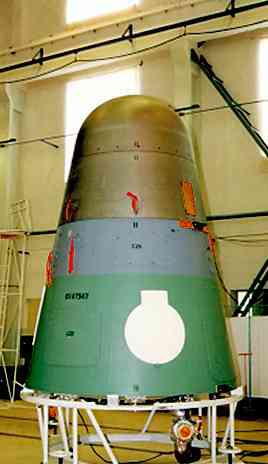I was surprised to find out from @JohnnyRobinson's new answer that China's series of Fanhui Shi Weixing spacecraft (FSW) used impregnated oak heat shields. I found this in astronautix:
The capsule for the FSW, like that of the US Discoverer/KH-1 spy satellite, was mounted heat shield-forward on top of the launch vehicle. The ablative impregnated-oak nose cap covered electrical equipment. The spherical aft dome contained the recovery parachute. (emphasis added)
Question: Did these spacecraft re-enter narrow-end or "nose" first? If so, was this aerodynamically stable? Most re-entry spacecraft (manned capsules for example) tend to be larger, blunt-end first. Why would nose-first have been chosen early-on?
above: Labeled "JB-2" in astronautix, presumably a FSW spacecraft.
above: "Recovery of FSW-17 photoreconnaissance satellite." From astronautix.
above: Image of FSW-3 or FSW-4 from globalsecurity.org.
above: "FSW reconnaissance satellite in assembly." From astronautix.
above: Screen shot from China's Space Program - From Conception to Manned Spaceflight by Brian Harvey, 2004, Springer-Verlag London, 978-1-85233-566-3, (also here)
above: Screen shot from CORONA: America’s First Satellite Program Kevin C. Ruffner, Ed., Center for the Study of Intelligence, Central Intelligence Agency, Washington, D-C. 1995





